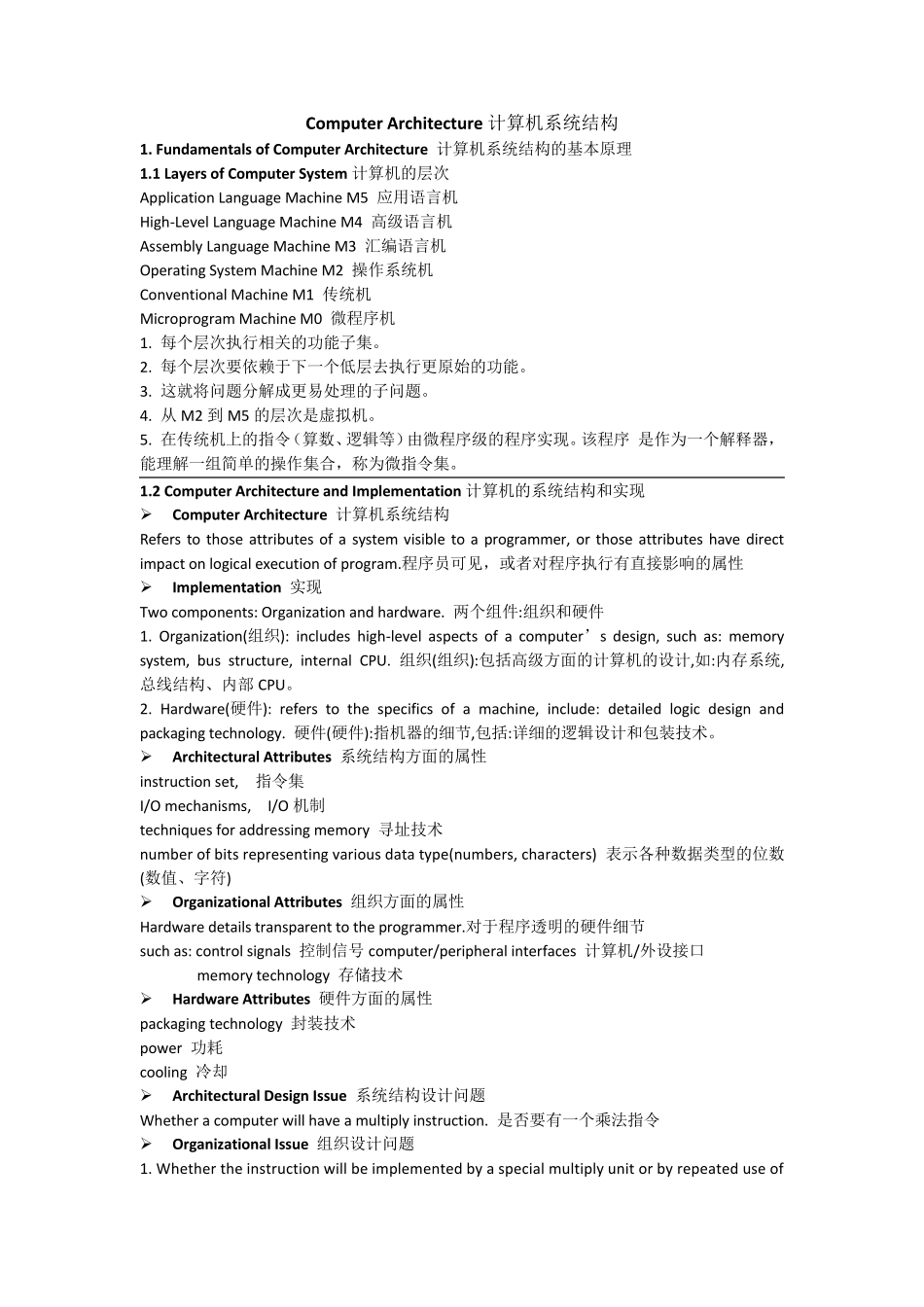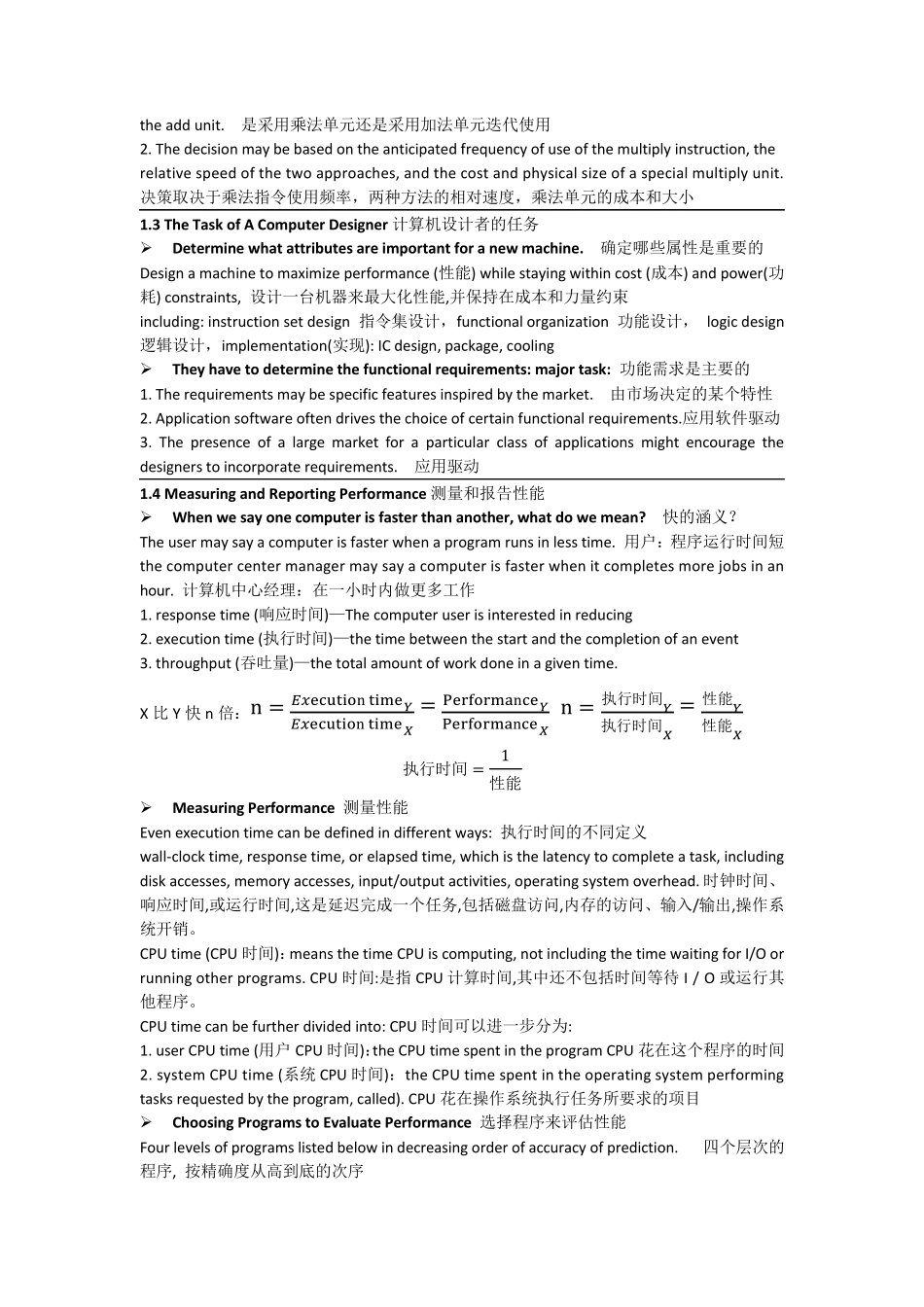Computer Architecture 计算机系统结构 1. Fundamentals of Computer Architecture 计算机系统结构的基本原理 1.1 Layers of Computer System 计算机的层次 Application Language Machine M5 应用语言机 High-Level Language Machine M4 高级语言机 Assembly Language Machine M3 汇编语言机 Operating System Machine M2 操作系统机 Conventional Machine M1 传统机 Microprogram Machine M0 微程序机 1. 每个层次执行相关的功能子集。 2. 每个层次要依赖于下一个低层去执行更原始的功能。 3. 这就将问题分解成更易处理的子问题。 4. 从M2 到M5 的层次是虚拟机。 5. 在传统机上的指令(算数、逻辑等)由微程序级的程序实现。该程序 是作为一个解释器,能理解一组简单的操作集合,称为微指令集。 1.2 Computer Architecture and Implementation 计算机的系统结构和实现 ➢ Computer Architecture 计算机系统结构 Refers to those attributes of a system visible to a programmer, or those attributes have direct impact on logical execution of program.程序员可见,或者对程序执行有直接影响的属性 ➢ Implementation 实现 Two components: Organization and hardware. 两个组件:组织和硬件 1. Organization(组织): includes high-level aspects of a computer’s design, such as: memory system, bus structure, internal CPU. 组织(组织):包括高级方面的计算机的设计,如:内存系统,总线结构、内部 CPU。 2. Hardware(硬件): refers to the specifics of a machine, include: detailed logic design and packaging technology. 硬件(硬件):指机器的细节,包括:详细的逻辑设计和包装技术。 ➢ Architectural Attributes 系统结构方面的属性 instruction set, 指令集 I/O mechanisms, I/O 机制 techniques for addressing memory 寻址技术 number of bits representing various data type(numbers, characters) 表示各种数据类型的位数(数值、字符) ➢ Organizational Attributes 组织方面的属性 Hardware details transparent to the programmer.对于程序透明的硬件细节 such as: control signals 控制信号 computer/peripheral interfaces 计算机/外设接...


